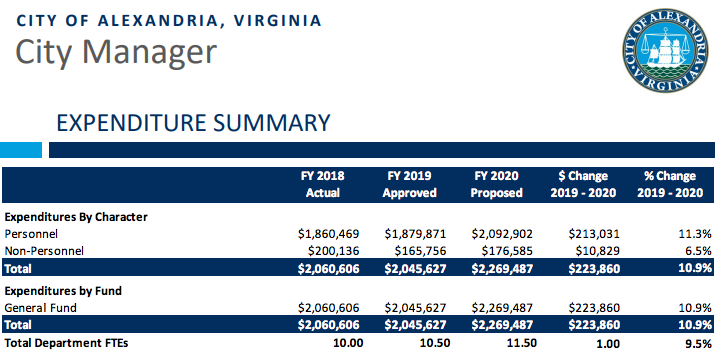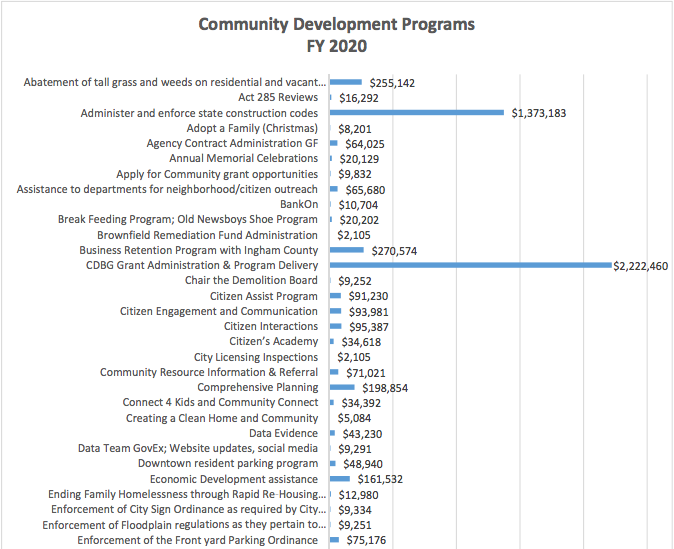“Budgeting is one of the most important things council does each year. It sets the priorities for the community… Priority-based budgeting [is about] taking a look at priorities and spending in a different manner. We’re going to see revenue growth much slower compared to expenditure demands. A good budget process [has] to hone in and allocate resources accordingly."
"Using a new method of reviewing city services — called “priority based budgeting” — city departments identified $6 million in operating savings and streamlining of certain existing revenue streams."
On February 19, City Manager Mark Jinks presented the Alexandria City Council with a proposed Fiscal Year (FY) 2020 General Fund Operating Budget of $ 761.1 million, which represents an increase of just 1.7% over the current year. The proposed budget includes $ 232.3 million in operating funds and for public schools (at 3.8%, or $ 8.5 million increase over FY 2019 funding) and invests $ 1.62 billion over 10 years in Alexandria's Capital Improvement Program.
"As a result of fiscal management by City Council and prudent financial management and innovative thinking by staff, this is the second year in a row that my proposed budget includes no tax rate increases, no major service reductions, full funding for the Superintendent's request for The Alexandria City Public Schools operating budget and full funding of the School Board's adopted 10-year capital plan," said City Manager Mark Jinks.
"More than ever, communities must make difficult choices about how to allocate limited resources. Faced with slow economic growth in the region, Alexandria is no exception. Because we have worked thoughtfully together to express our values and prioritize our investments, we have been able to maintain core services while pursuing progressive goals."
"We apply innovative and technologically advanced practices, we embrace a simultaneous commitment to the environment and the economy, and we work towards a vision of fairness and justice for everyone in our community. In short, my budget plan seeks to continue our progress as a smart, green, and equitable city."
Using a new method of reviewing city services — called “priority based budgeting” — city departments identified $6 million in operating savings and streamlining of certain existing revenue streams.
The City of Alexandria VA launched implementation of Priority Based Budgeting (PBB) in June 2018. Morgan Routt and Lisa Hentey lead the City’s implementation team, under City Manager Mark Jinks who has depicted PBB as a “new lens” with which the City may clearly see it’s opportunities to free up and reallocate resources towards the priorities most relevant to the community.

Priority Based Budgeting
At the start of the FY 2020 budget development process, the City faced a budget gap of $27.5 million between projected revenues and the cost of maintaining existing City and School services. To help close this gap, City departments were asked to prepare options totaling 2.5% of their budgets in either reductions or revenue increases. Departments were also encouraged to request budget increases in priority areas linked to City Council’s Strategic Plan, which are reflected in the initiatives highlighted throughout this message.
"I thank the staff across City government who identified opportunities for fiscal improvements. As a result, my proposed budget includes $4.8 million in operating budget savings across departments, $1.3 million in revenue from increased cost recovery and collections, and $4.5 million in new or expanded service investments (funded largely from existing resources)."
The Office of Management and Budget continued this year to lead the City’s transition to the nationally recognized Priority-Based Budgeting philosophy, which helps better allocate budget resources by evaluating each program and service against objective criteria. Each department’s section of the budget now includes the priority level quartile for each service, as determined through a peer-reviewed scoring process. Priority levels range from 1 to 4, with 1 representing the highest degree of alignment with the City Strategic Plan.
"I am proposing a General Fund Operating Budget of $761.1 million, which represents an increase of just 1.7% over the current year. The total proposed increase in the cost of City operations is only 0.6%. Of all net new revenue growth, two-thirds is devoted to the Alexandria City Public Schools (ACPS) and one-third to Metro."
The City partners closely with ACPS to ensure high-quality education for Alexandria’s public school students. I am proposing a direct transfer to ACPS of 30.5% of the General Fund budget, or $232.3 million, which is an increase of $8.5 million, or 3.8%, over the current year. This represents 100% of Superintendent Hutchings’ request, and is possible because he and his team crafted a responsible budget. I thank them for their efforts.
"My budget increases public transit service investments by $5.3 million, or 17.8%. This includes a General Fund increase of $4.3 million, or 27.4%, for the City’s contribution to Metro’s operating budget. Nevertheless, I am proposing that the City contribute only half of what the Metro General Manager has requested above existing General Assembly commitments, and no funding toward his proposed service enhancements."
Accountable, Effective and Well-Managed Government
As referenced in the budget message, "The Office of Management and Budget continued this year to lead the City’s transition to the nationally recognized Priority-Based Budgeting philosophy, which helps better allocate budget resources by evaluating each program and service against objective criteria.
Each department’s section of the budget now includes the priority level quartile for each service, as determined through a peer-reviewed scoring process. Priority levels range from 1 to 4, with 1 representing the highest degree of alignment with the City Strategic Plan."
“Of all net new revenue growth, two-thirds is devoted to the [public school system] and one-third to Metro,” said Jinks.
He highlighted his budget’s pursuit of certain “progressive goals,” under the headings of making the city more equitable, smarter and greener.
"Equitable investments include adding a new “racial and social equity officer” position to the city manager’s staff. This person would help “develop departmental equity plans, review city recruitment and hiring practices, expand outreach to underrepresented groups, implement nationally-recognized best practices, and build bridges to those in our community whose interaction with government is limited,” said Jinks.
Smart city investments would include transitioning the city’s Call.Click.Connect customer service system to a telephone-based 3-1-1 system; implementing a new system for electronic code permit applications and plan submissions; and constructing in FY 2020 a city-owned fiber optic broadband network, interconnecting municipal facilities. Among other things, the network would support new, adaptive traffic sensors and signals aimed at streamlining car traffic.
Green investments would include transitioning the city’s vehicle fleet, including DASH buses, to electric and hybrid models; adding “energy audits” to municipal facility assessments; increasing the city’s goal for green building standards in municipal facilities; and keeping plans on track for the new Potomac Yard Metro station, which will remove an estimated 5,000 cars per day from Alexandria roadways.
The New Lens
Alexandria has taken a very comprehensive approach in incorporating their PBB data into their proposed 2020 budget. They utilized PBB to not only prioritize programs, but to also address a significant budget deficit.
A critical step to not only better understand what services your organization provides to the community, but also in implementing priority based budgeting, is program inventory and costing. While many organizations say they know what they do, the truth is many lack the data that reflects "what you do and how much it costs."
According to GFOA: “Program budgeting is an underlying assumption to many of GFOA's budgeting best practices, and being able to connect costs and outcomes associated with specific services is critical to communicating value to citizens."
The only way to get to the answer of questions like "can we do this program more efficiently," or "are we the best source to provide this service," or "are we recovering the costs for providing this service, both direct and indirect costs" requires a complete understanding of what the program is, and how much it costs.
If you are facing a budget shortfall (Alexandria started the FY20 budget season facing a $27.5 million shortfall), then these are the exact questions that need to be answered and analyzed in order to strategically address any budget challenges.
Department(s) Budget Breakdown
For example, the Office of the City Manager has outlined a department description, fiscal year highlights, department changes to city services, performance indicators and priority based budgeting results as part of the FY20 proposed budget (the city has done the same with every department of the city).
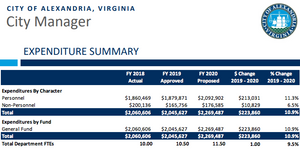
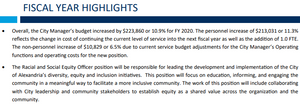
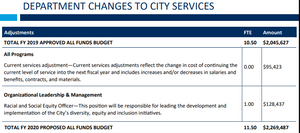


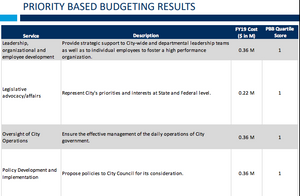

The Office of Management and Budget led the City’s transition to the nationally recognized Priority-Based Budgeting philosophy, which helps better allocate budget resources by evaluating each program and service against objective criteria.
Each department’s section of the budget now includes the priority level quartile for each service, as determined through a peer-reviewed scoring process. Priority levels range from 1 to 4, with 1 representing the highest degree of alignment with the City Strategic Plan.
Departments were also encouraged to request budget increases in priority areas linked to City Council’s Strategic Plan, which are reflected in the initiatives documented in the priority based budgeting results section (above).
As we've seen with so many priority based budgeting communities, the evolution of strategically reallocating resources from lower priority to higher priority programs, and to new programs that benefit and/or address new needs in the community, leads to more effective government and more satisfied citizens.
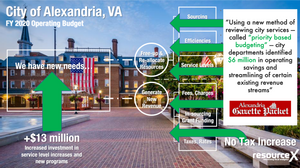
With a $13 million increase in the operating budget, afforded in part by $6 million in resource re-allocation and the bolstering of cost recovery opportunities, the City of Alexandria, Virginia has had an incredibly successful first year in Priority Based Budgeting by every measure.
To dive in and review the full Alexandria budget, click here!

www.ResourceX.net
